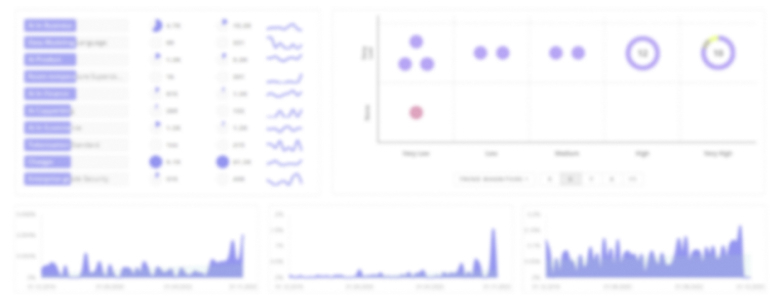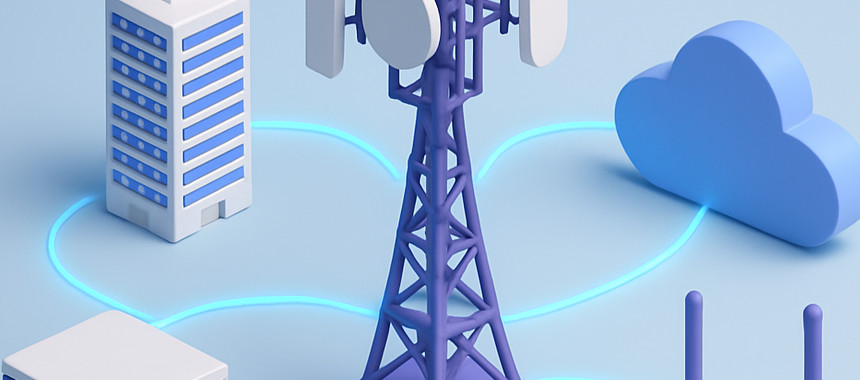
Connected Infrastructure Report
: Analysis on the Market, Trends, and TechnologiesThe connected infrastructure field shows clear scale and investor interest: the internal connected infrastructure data records $10.33B total funding across 1,656 companies, and technology adoption is accelerating as deployments move from pilots to production-level platforms and enterprises prioritize connectivity and edge investments to support AI and real-time operations Future of Connectedness Checklist for 2024: Top Priorities to Consider for the Enterprise Connectivity Road Map.
We updated this report 22 days ago. Noticed something’s off? Let’s make it right together — reach out!
Topic Dominance Index of Connected Infrastructure
The Topic Dominance Index trendline combines the share of voice distributions of Connected Infrastructure from 3 data sources: published articles, founded companies, and global search
Key Activities and Applications
- Intelligent and autonomous systems rollouts: cities and transport corridors are implementing unified stacks that combine 5G, edge compute, ITS, and grid intelligence to support autonomous mobility and traffic orchestration and to meet enterprise connectivity needs for AI-driven operations.
- Smart city platform integration: municipal programs focus on modular, open IoT platforms and digital twins for traffic, lighting, waste, energy and public-safety services to consolidate siloed systems and improve asset lifecycles and to enable measurable operational outcomes via improved connectivity.
- Infrastructure monitoring and asset preservation: sensor networks, structural health monitoring, and AI analytics are used to move from reactive repairs to predictive maintenance and optimized capital planning for bridges, depots, and substations and AI-driven preservation planning.
- EV charging and depot electrification: operators aggregate depot power, implement centralised power cabinets, and evaluate on-route opportunity charging while standardisation (e.g., OCPP, OppCharge) and grid-integration remain gating factors and dedicated sector forecasts highlight scaling constraints and regulatory drivers.
- Telecommunications and backhaul modernization: densification (small cells, FTTH, fiber backhaul), private LTE/CBRS and Open RAN are central to enabling low-latency, high-capacity services for urban and industrial deployments and this investment directly supports edge/AI use cases across campuses and sites Top Enterprise Connectivity Investments to Accelerate Operational Efficiency.
Emergent Trends and Core Insights
- IoT + edge-first architectures are consolidating as the dominant deployment pattern. Pervasive sensor networks push processing to the edge to meet latency and privacy constraints while reducing cloud dependence and enterprise guidance recommends edge investment to operationalize AI workloads The Future of Enterprise Connectivity in Manufacturing — Key Investment Areas to Advance AI-Driven Operations.
- Interoperability and open standards matter strategically. Market momentum favors unified data models, open APIs and cross-vendor frameworks to prevent vendor lock-in and enable multicloud/multi-edge portability oneM2M standards overview and IDC highlights open standards and unified control planes as enablers for hybrid/multicloud success Hybrid and Multicloud Interoperability Building Blocks for Future Enterprise Innovation.
- AI is becoming embedded in infrastructure operations rather than being only an add-on analytics layer. Organizations use ML for predictive maintenance, network orchestration, and traffic optimization, creating a requirement for higher-throughput, predictable networks The Critical Importance of Connectivity in Delivering Experience-Orchestrated Applications and the internal trend data shows growing adoption of AI-driven digital twin and analytics platforms.
- Decentralized physical infrastructure models (DePIN and layer-0 hardware networks) present an alternate investment path for connectivity and data sovereignty; they compete with centralized cloud/telecom models in niche scenarios where local control, security, or alternative economics are valued Conduit Network company profile and related market commentary Can Connectedness Be a Driver of Sustainability? Part 1.
- Standards and procurement friction remain adoption blockers. For example, opportunity-charging economics and charging-standard fragmentation slow fleet electrification decisions; similarly, spectrum and local permitting constrain 5G small-cell rollouts and regulators are cited as key variables in deployment timelines.
Technologies and Methodologies
- IoT platforms with edge compute and device lifecycle management: cloud-native IoT stacks and edge runtime frameworks that support device management, offline operation, and secure telemetry ingestion Cumulocity platform profile and internal platform notes.
- Digital twin and geospatial integration: digital replicas enable scenario simulation, condition monitoring, and asset lifecycle planning; buyers use twins to integrate BIM, sensor feeds and GIS for planning and maintenance and platform case studies Insight Terra edge-to-cloud platform.
- Infrastructure as Code (IaC) and automation for OT/IT convergence: IaC practices applied to network and IoT provisioning increase repeatability and compliance for large-scale sensor and private-network deployments and enterprise frameworks recommend policy-driven automation for hybrid environments.
- AI/ML pipelines and near-edge analytics: models trained in cloud but inferred at or near the edge to reduce data movement, improve response times, and lower bandwidth costs.
- Open RAN, private 5G and fiber-forward backhaul: architectures that enable multi-vendor RAN, private campus networks, and fiber expansion remain essential to meet throughput, latency and service-slicing requirements and telecommunications infrastructure guidance.
Connected Infrastructure Funding
A total of 255 Connected Infrastructure companies have received funding.
Overall, Connected Infrastructure companies have raised $13.9B.
Companies within the Connected Infrastructure domain have secured capital from 842 funding rounds.
The chart shows the funding trendline of Connected Infrastructure companies over the last 5 years
Connected Infrastructure Companies
- ATRIUS INDUSTRIES — ATRIUS focuses on integrating 5G, edge compute and intelligent grids to scale autonomous urban systems; the firm positions a single, open city-level network as the platform for large-scale autonomy and resilience and emphasizes coordinated permitting and policy work to accelerate deployment and the connected infrastructure trend analysis. ATRIUS targets corridor and city-scale projects where coordinated communications, edge compute and power architectures must interoperate for vehicle automation and real-time control.
- Icity — I.city delivers a modular, interoperable IoT platform for smart and sustainable urban management (AC360), focusing on multi-vendor device integration, data fusion and configurable services for municipalities; this product approach matches the market demand for open, extensible smart-city platforms and digital twins and municipal platform trends.
- Northward Infrastructure — Northward builds shared street-level infrastructure that co-locates broadband access, EV chargers, signage and edge compute to reduce duplicative civil works; their asset-ownership model aims to accelerate deployments at partner properties and lower per-site capex through shared services, aligning with the trend toward shared physical infrastructure and multi-service poles and the connected infrastructure market outlook.
- Connectivia Labs — Connectivia offers a patented sensor-to-edge IoT architecture that enables long-range, low-power edge compute without always-on internet connectivity; the approach reduces operational dependence on centralized cloud links and supports resilient edge inference for asset monitoring and industrial applications, matching the internal emphasis on edge-first systems and the broader edge trend.
- GridMatrix — GridMatrix supplies AI software to optimize traffic flow and facility operations across roads, ports and campuses; their analytics improve safety, reduce emissions and increase throughput by using existing sensor and traffic-control data, illustrating the commercial value of AI applied to transport infrastructure and the infrastructure-analytics emphasis in the trends data.
Gain a better understanding of 1.7K companies that drive Connected Infrastructure, how mature and well-funded these companies are.
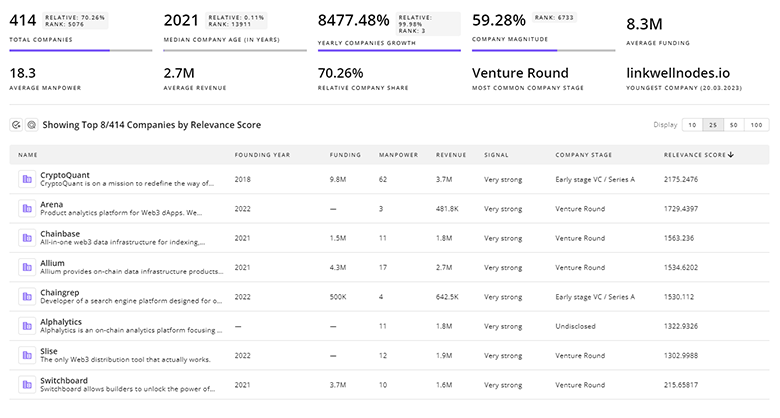
1.7K Connected Infrastructure Companies
Discover Connected Infrastructure Companies, their Funding, Manpower, Revenues, Stages, and much more
Connected Infrastructure Investors
Gain insights into 1.1K Connected Infrastructure investors and investment deals. TrendFeedr’s investors tool presents an overview of investment trends and activities, helping create better investment strategies and partnerships.
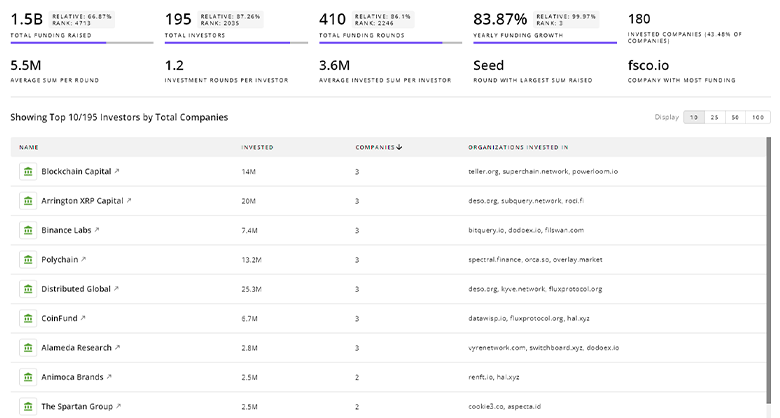
1.1K Connected Infrastructure Investors
Discover Connected Infrastructure Investors, Funding Rounds, Invested Amounts, and Funding Growth
Connected Infrastructure News
Gain a competitive advantage with access to 3.9K Connected Infrastructure articles with TrendFeedr's News feature. The tool offers an extensive database of articles covering recent trends and past events in Connected Infrastructure. This enables innovators and market leaders to make well-informed fact-based decisions.
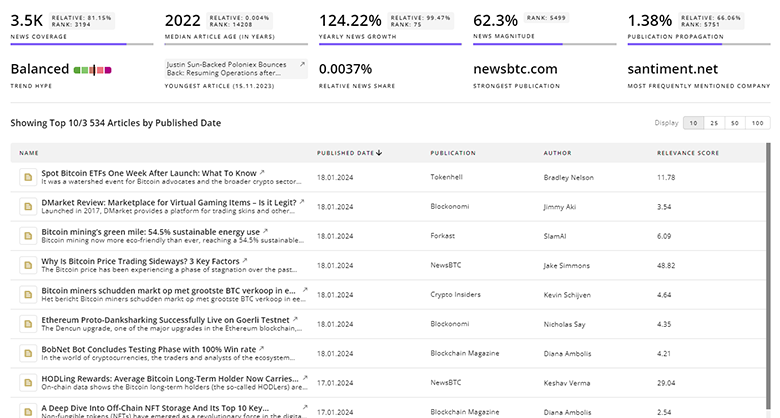
3.9K Connected Infrastructure News Articles
Discover Latest Connected Infrastructure Articles, News Magnitude, Publication Propagation, Yearly Growth, and Strongest Publications
Executive Summary
Connected infrastructure now sits at the intersection of networking, edge compute, sensor platforms and AI. The immediate strategic moves are clear: (1) prioritize open, standards-based architectures that enable multivendor interoperability; (2) architect for edge inference and hybrid cloud operations to contain latency and data costs; (3) treat procurement and permitting as core program risks and front-load stakeholder alignment to avoid rollout delays; and (4) pair predictive analytics and digital twin capabilities with new financing models (shared infrastructure and subscription-based services) to increase public-sector affordability and private-sector participation. These actions position operators to convert sensor and connectivity investments into measurable outcomes: safer streets, lower operational costs, longer asset life, and measurable reductions in energy and emissions.
We seek partnerships with industry experts to deliver actionable insights into trends and tech. Interested? Let us know!
